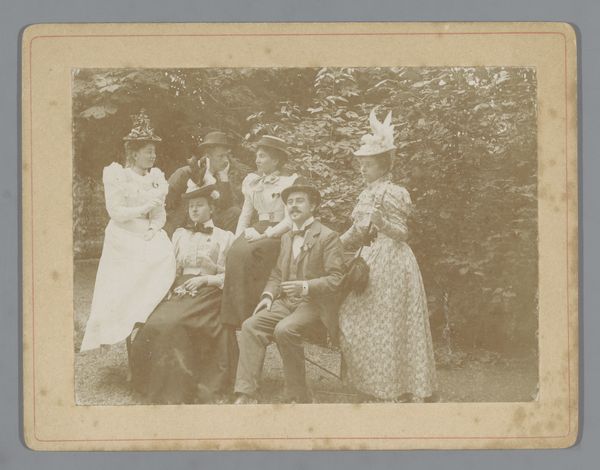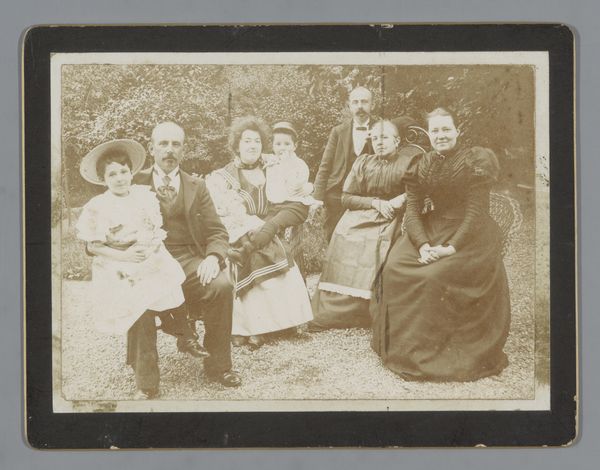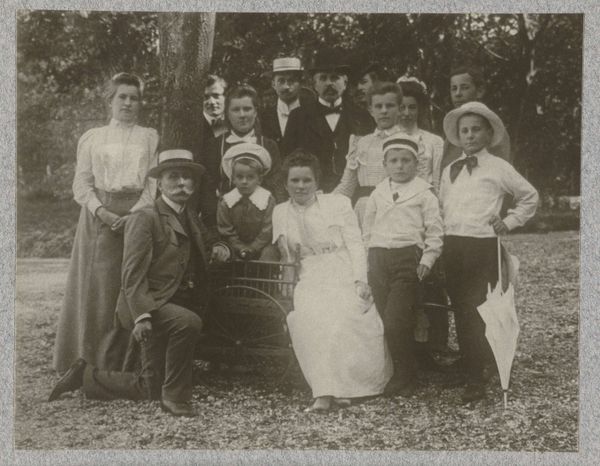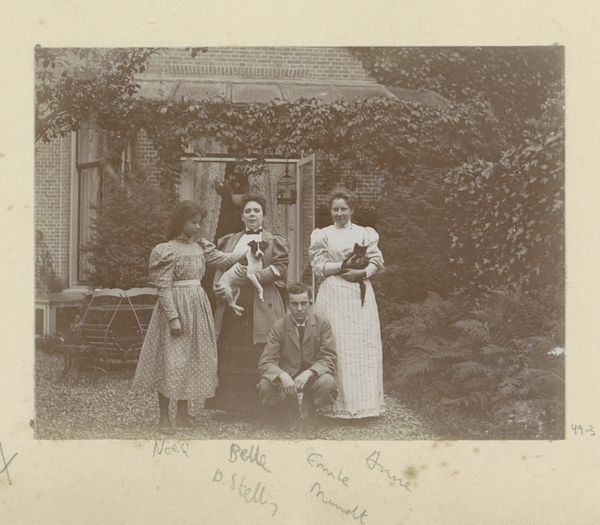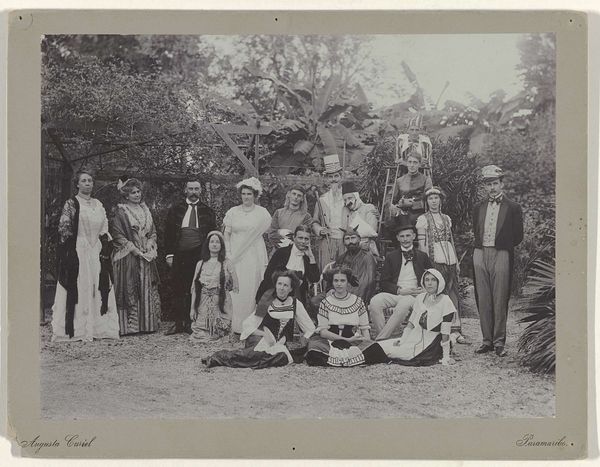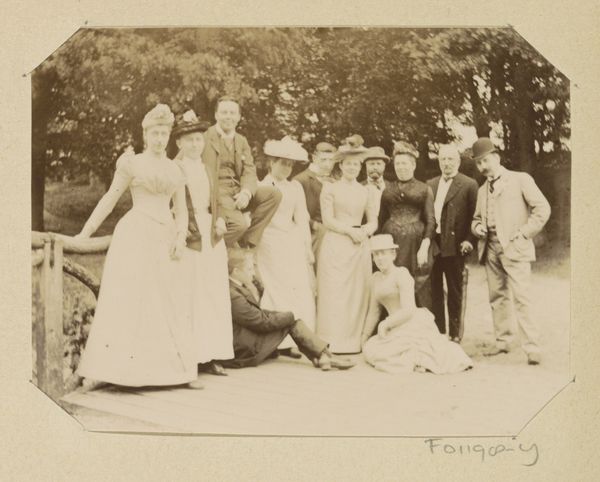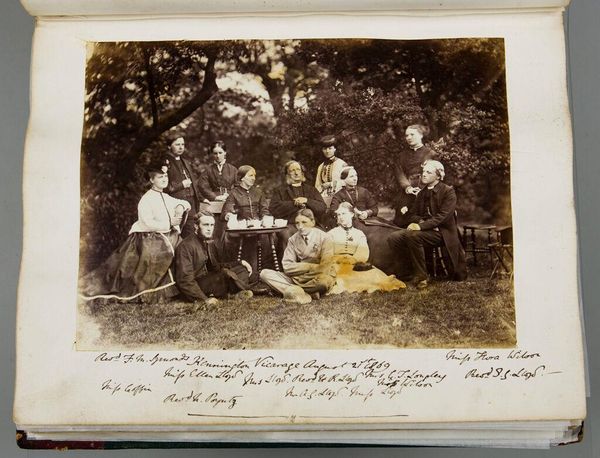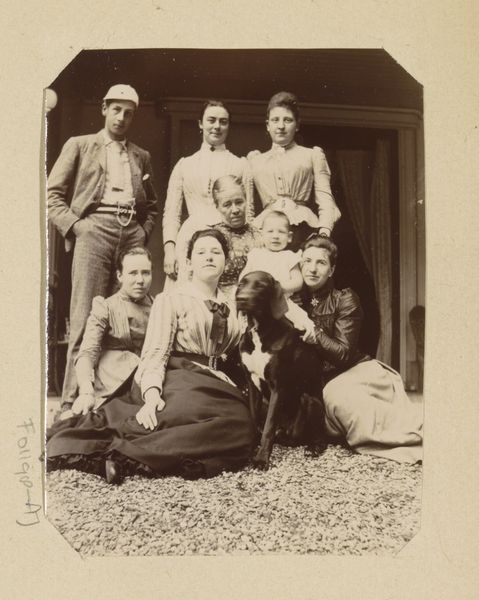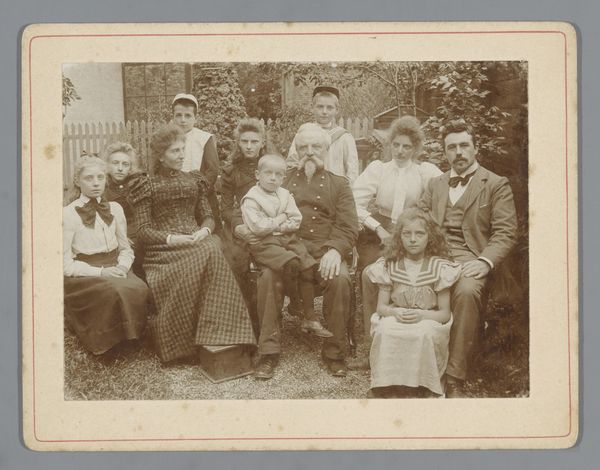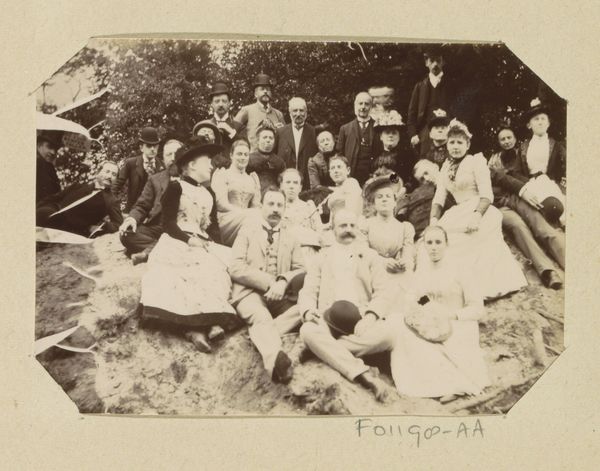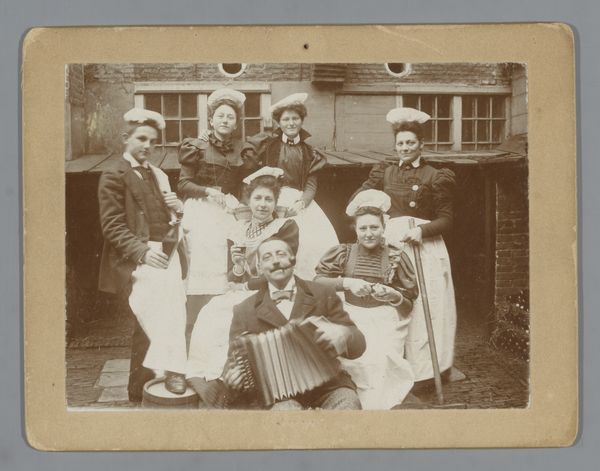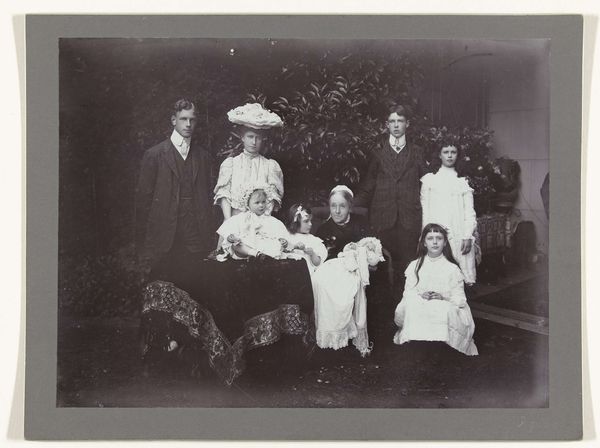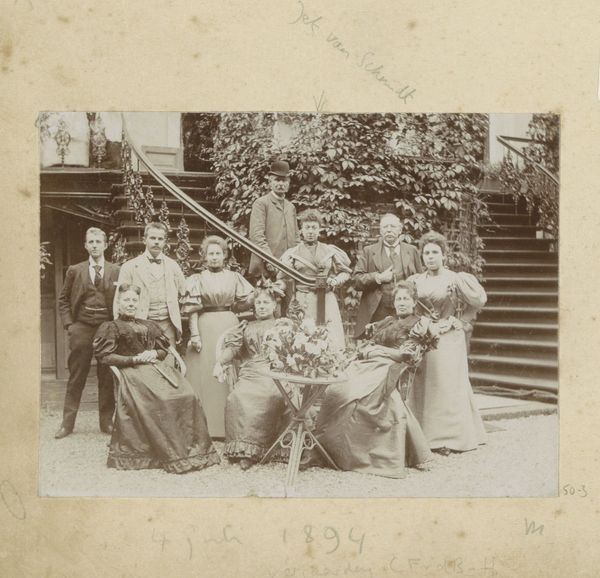
Groepsportret van de familie Piek, knielend met Kodak No. 1 camera op de voorgrond is vermoedelijk Willem Frederik Piek Sr. 1889 - 1893
0:00
0:00
photography
#
portrait
#
photography
#
historical photography
#
portrait reference
#
group-portraits
#
19th century
Dimensions: height 74 mm, width 99 mm
Copyright: Rijks Museum: Open Domain
Curator: Look, isn't it amazing? This is "Groepsportret van de familie Piek, knielend met Kodak No. 1 camera op de voorgrond is vermoedelijk Willem Frederik Piek Sr." dating from 1889 to 1893. What strikes you first about it? Editor: The sepia tone just washes over me... there's a faded melancholy about the entire scene. And the light feels so… gauzy, like looking through old lace. But what about you? Any initial material observations? Curator: Well, immediately my attention is drawn to the Kodak No. 1 camera itself, prominently featured. The Kodak camera democratized photography and placed its means of production, making photographic art accessible to people like the Piek family. I also notice the carefully arranged group and their garments: What were their social standing and means of access to dress making practices? Editor: Definitely a posed picture! It makes you wonder what those individuals lives were, all those narratives, all existing outside that single frame, but what’s truly fascinating is the man kneeling front, clutching what appears to be that pioneering Kodak. Talk about an act of image making itself. Is this like, the beginning of the 'selfie', on a societal level? Curator: In a sense, yes! It signaled a huge shift. Prior to this, portraiture was reserved for the wealthy elite due to time-consuming labor and costs. A lot of professional painting at the time required teams of atelier painters to produce, including extensive use of preliminary drawing. With Kodak, one could record themselves, making representation itself, more available. But it's interesting to think, how might family wealth still affect the production and consumption of photographic materials? Editor: Right, so access might be available, but to what degree? Anyway, for me, that camera turns the act of photography on its head: the photographer being part of the subject within it. I almost wonder about the other people, the emotionality. Their stiffness tells you that getting photographed must've felt like an 'event'. Do you notice anything specific about those sartorial choices, or perhaps in the landscape beyond? Curator: It is rather intriguing, the dark tree branches seeming to envelope the entire family within them, as if enclosing the space within. These are subtle visual choices with particular material implications. The group portrait creates both unity and difference in the labor involved in their daily living and access to this very event of being captured within it. Editor: What I glean, what seeps out from the image as a whole, is that at this point in time, something magical and slightly unsettling occurred, to capture moments, even if this moment right now appears somewhat stiff and overly formal... There's just something beautifully poignant about the effort itself. Curator: Indeed. It really underscores how access to photographic means continues to reshape our identities, what labor we employ to capture our stories, and to record and retell these for future material contexts.
Comments
No comments
Be the first to comment and join the conversation on the ultimate creative platform.
